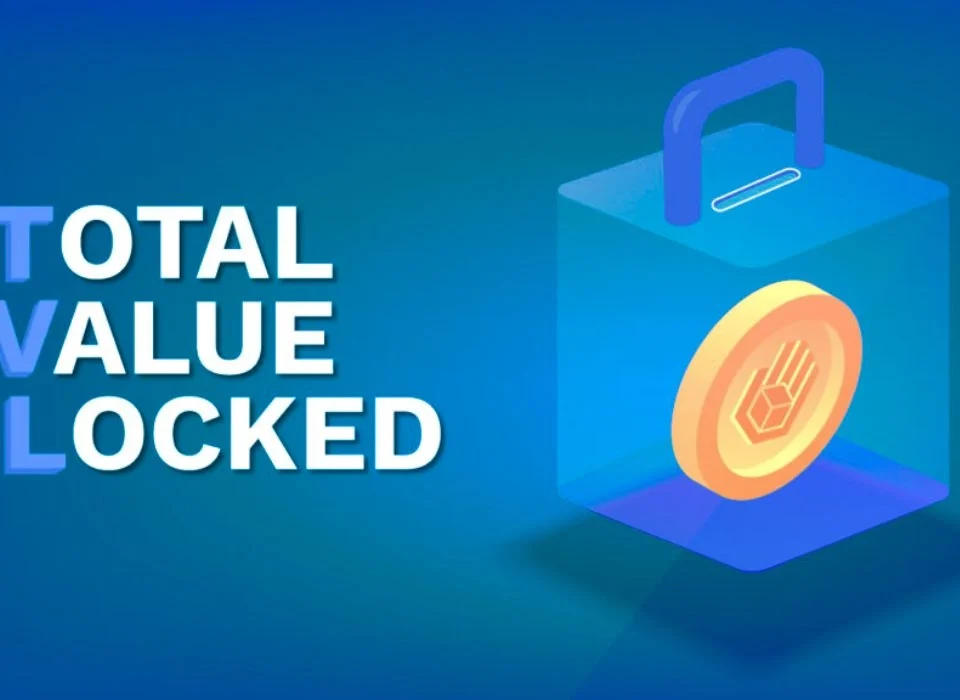
An In-Depth Look at Polkadot (DOT): Revolutionizing Blockchain Interoperability
04/08/2024
The Role of Blockchain in Healthcare
06/08/2024Uniswap and UNI Token: Transforming Decentralized Exchange and Finance
Uniswap has emerged as one of the most influential platforms in the decentralized finance (DeFi) space. As a decentralized exchange (DEX) built on the Ethereum blockchain, Uniswap allows users to trade cryptocurrencies directly from their wallets in a trustless and permissionless manner. This comprehensive article explores the Uniswap exchange and its native token, UNI, detailing their features, benefits, mechanisms, and future prospects.
Introduction to Uniswap
What is Uniswap?
Uniswap is a decentralized exchange protocol that facilitates automated trading of Ethereum-based tokens through a system known as automated market making (AMM). Unlike traditional exchanges, Uniswap does not rely on order books. Instead, it uses liquidity pools and smart contracts to enable peer-to-peer trading.
Origins and Development
Uniswap was created by Hayden Adams in November 2018. The idea was inspired by Ethereum co-founder Vitalik Buterin’s concept of AMMs. Since its inception, Uniswap has undergone several upgrades, with Uniswap V2 launching in May 2020 and Uniswap V3 in May 2021, each introducing new features and improvements.
How Uniswap Works
Automated Market Maker (AMM)
Uniswap utilizes an AMM model, which replaces traditional buy and sell order books with liquidity pools. These pools consist of pairs of ERC-20 tokens provided by liquidity providers (LPs). The AMM algorithm determines the price of tokens in the pool based on their supply ratios, ensuring continuous liquidity.
Liquidity Pools
Liquidity pools are the cornerstone of Uniswap’s functionality. Users, known as liquidity providers, deposit an equivalent value of two tokens into a pool, such as ETH and DAI. In return, they receive liquidity tokens representing their share of the pool. These tokens can be redeemed for the original tokens plus a portion of the trading fees.
Trading on Uniswap
Users can trade tokens directly on Uniswap by connecting their Ethereum wallet to the platform. They can swap one ERC-20 token for another at the current market rate, determined by the AMM. Each trade incurs a small fee, which is distributed to the liquidity providers as an incentive.
Uniswap V3
Uniswap V3 introduced several enhancements over its predecessor:
- Concentrated Liquidity: Allows liquidity providers to allocate liquidity within specific price ranges, increasing capital efficiency.
- Multiple Fee Tiers: Offers different fee tiers (0.05%, 0.3%, and 1%) to accommodate various types of trades and risk levels.
- Improved Oracle System: Enhances the precision and reliability of on-chain price data.
The UNI Token
What is UNI?
UNI is the native governance token of the Uniswap protocol. It was introduced in September 2020 as part of Uniswap’s effort to decentralize the protocol’s governance. UNI holders can propose and vote on changes to the protocol, such as fee structures, new features, and upgrades.
Distribution and Supply
UNI has a total supply of 1 billion tokens, distributed over four years. The initial allocation included:
- 60% to Uniswap community members, including users and liquidity providers.
- 21.51% to team members and future employees.
- 17.80% to investors.
- 0.69% to advisors.
After the initial four-year period, a perpetual inflation rate of 2% per year will be introduced to ensure network participation and incentives.
Governance
UNI token holders participate in the governance of the Uniswap protocol by voting on proposals that affect the future of the platform. These proposals can cover a range of topics, including technical upgrades, fee changes, and the allocation of the community treasury.
Benefits of Uniswap
Decentralization
Uniswap operates without a central authority, ensuring that all transactions are transparent, secure, and resistant to censorship. This decentralization enhances user trust and fosters a more inclusive financial system.
Permissionless Trading
Anyone with an Ethereum wallet can trade on Uniswap without needing to register or undergo KYC (Know Your Customer) verification. This permissionless nature lowers barriers to entry and promotes financial inclusivity.
Continuous Liquidity
The AMM model and liquidity pools ensure that there is always liquidity available for trading. This continuous liquidity reduces the risk of slippage and makes it easier for users to execute trades.
Earning Opportunities
Liquidity providers earn a share of the trading fees generated by the pools they contribute to. This provides an incentive for users to provide liquidity and helps maintain the health of the Uniswap ecosystem.
Innovation and Upgrades
Uniswap’s ongoing development and upgrades, such as the transition from V1 to V3, demonstrate a commitment to innovation and improving user experience. These upgrades introduce new features and enhance the platform’s efficiency and security.
Challenges and Risks
High Gas Fees
As an Ethereum-based protocol, Uniswap is subject to high gas fees, particularly during periods of network congestion. These fees can make trading and providing liquidity expensive, limiting accessibility for smaller users.
Impermanent Loss
Liquidity providers face the risk of impermanent loss, which occurs when the price of tokens in a liquidity pool diverges significantly from their initial deposit value. This can result in a loss of value compared to simply holding the tokens.
Competition
Uniswap faces competition from other DEXs and AMM platforms, such as SushiSwap, Curve, and Balancer. These competitors offer similar services and may introduce innovations that attract users away from Uniswap.
Regulatory Uncertainty
The regulatory environment for DeFi and DEXs is still evolving. Changes in regulations could impact Uniswap’s operations and the broader DeFi ecosystem, potentially imposing compliance requirements or restrictions.
Use Cases of Uniswap
Decentralized Finance (DeFi)
Uniswap is a cornerstone of the DeFi ecosystem, providing essential infrastructure for decentralized trading, yield farming, and liquidity mining. Many DeFi projects rely on Uniswap for liquidity and price discovery.
Examples
- Yield Farming: Users can earn additional tokens by providing liquidity to Uniswap pools and participating in yield farming programs.
- Synthetic Assets: Platforms like Synthetix use Uniswap to provide liquidity and facilitate the trading of synthetic assets.
Token Swaps
Uniswap enables seamless token swaps, allowing users to exchange one ERC-20 token for another without relying on centralized exchanges. This capability is crucial for the functioning of many DeFi protocols and decentralized applications.
Examples
- Initial DEX Offerings (IDOs): New projects launch their tokens on Uniswap, allowing users to swap ETH or stablecoins for the new tokens directly.
- Cross-Chain Swaps: Integrations with projects like Thorchain and Ren facilitate cross-chain swaps, expanding Uniswap’s reach beyond the Ethereum ecosystem.
Liquidity Provision
Uniswap provides opportunities for users to earn passive income by becoming liquidity providers. By depositing tokens into liquidity pools, users earn a share of the trading fees proportional to their contribution.
Examples
- Community-Driven Pools: Users create and manage their liquidity pools for specific tokens, supporting niche markets and new projects.
- Aggregators: Platforms like 1inch and Matcha aggregate liquidity from Uniswap and other DEXs to provide users with the best trading rates.
Future Prospects of Uniswap
Layer-2 Solutions
To address the issue of high gas fees, Uniswap is exploring Layer-2 scaling solutions, such as Optimistic Rollups and zk-Rollups. These solutions aim to reduce transaction costs and increase throughput, making Uniswap more accessible to a broader user base.
Cross-Chain Integration
Uniswap’s future may include greater integration with other blockchain networks through cross-chain bridges. This would enhance interoperability and allow users to trade assets from different blockchain ecosystems on Uniswap.
Enhanced Governance
As the Uniswap community grows, governance mechanisms will likely evolve to include more sophisticated and inclusive decision-making processes. This could involve new voting structures, enhanced delegation systems, and greater community engagement.
Continued Innovation
Uniswap’s commitment to innovation ensures that it will continue to evolve and adapt to the changing landscape of decentralized finance. Future upgrades and new features will enhance the platform’s functionality, security, and user experience.
Conclusion
Uniswap has revolutionized the way people trade cryptocurrencies by providing a decentralized, permissionless, and efficient platform for token swaps and liquidity provision. Its innovative use of automated market making and liquidity pools has set a new standard in the DeFi space. Despite challenges such as high gas fees and regulatory uncertainty, Uniswap’s ongoing development and strong community support position it for continued success. The introduction of the UNI token has further decentralized the protocol’s governance, empowering users to shape its future. As blockchain technology and decentralized finance continue to grow, Uniswap will remain a key player, driving innovation and expanding the possibilities of a decentralized financial ecosystem. Understanding Uniswap’s mechanisms, benefits, and potential is essential for anyone involved in the world of cryptocurrencies and DeFi.



